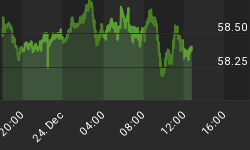We are all aware that the Fed has a dual mandate of stable prices and maximum employment. But what may come as a surprise to most is that they have a distinct preference in their mandates. The Federal Reserve under Ben Bernanke has a clear bias towards fulfilling the goal of maximum employment. Given the situation where unemployment is high and prices are relatively stable, the Fed has opted to pursue a policy of pursuing higher inflation in the hopes of engendering lower unemployment rates.
What the Fed doesn't understand is that full employment can exists in perfect harmony with stable prices. That's because having more people producing goods and services can never by itself lead to an environment of rising aggregate prices. And, most importantly, an increasing rate of inflation actually increases the rate of unemployment. Not only do these facts make sense economically but also are borne out in the historical data.
Each and every time the Fed has increased the money supply and sent prices rising the rate of unemployment has risen not decreased. The simple reason for this is that inflation diminishes the purchasing power of most consumers. Falling real wages means less discretionary purchases can be made. Falling demand leads to increased layoffs and the unemployment rises as economic growth falters.
The 12.2% Y.O.Y. rise in CPI that occurred in November of 1974 led to the cyclical high of 9% unemployment during May of 1975. Likewise, in 1979 the Y.O.Y increase in CPI reached a high of 14.6% in March and April of 1980, which was followed by another cyclical high 10.8% unemployment print in November and December of 1982. Once again, Y.O.Y. CPI increased from 1.2% in December 1986 to 6.4% in October of 1990. That again corresponded with the rise in unemployment that occurred from the 5% level in March of '89 to 7.8% in June of '92.
Today, we find that the unemployment rate is 9.1% due to the credit crisis and Great Recession. Bernanke believes he can bring that figure down by creating inflation. He has become successful in bringing YOY changes in PPI to 6.9% and CPI to 3.9%. Inflation has now arrived. However, the rate of unemployment will only increase from here as long as the Fed mistakenly holds the belief that printing money can solve the employment situation. Quite the contrary, it only causes the dissolution of the middle class.
In reality, the Fed needs to uphold only one mandate; that of stable prices. Fulfilling that mandate by keeping in check the growth of money supply is the only way to ensure our economy displays full employment and maximum economic growth.
















